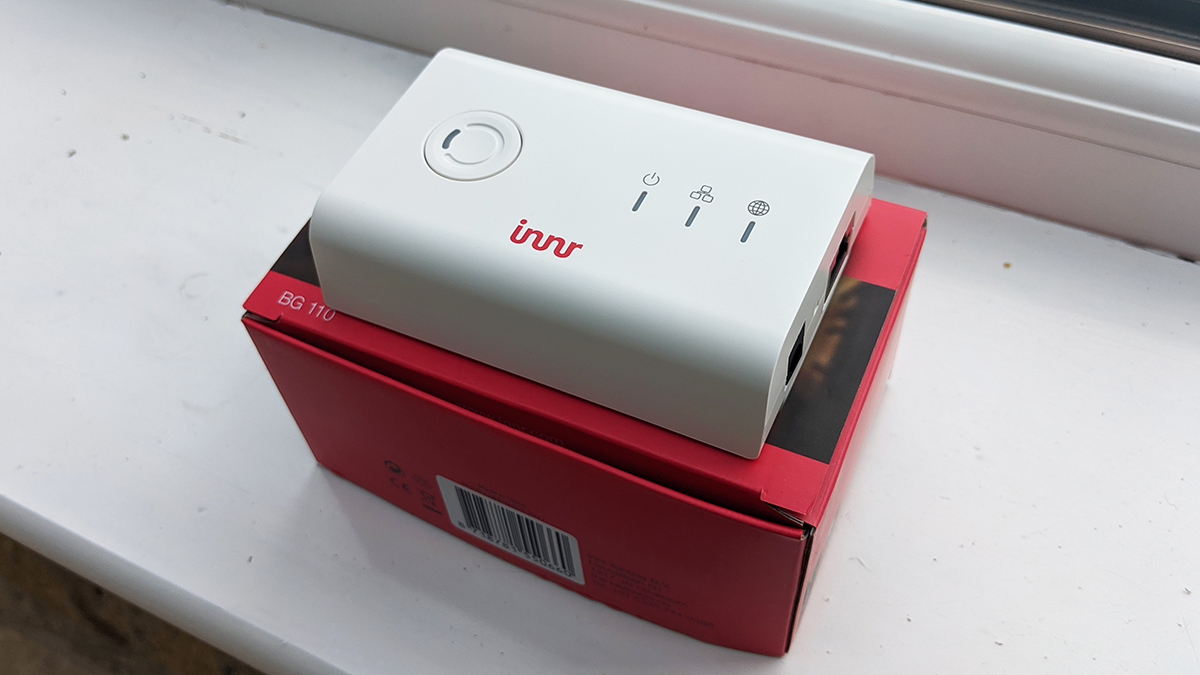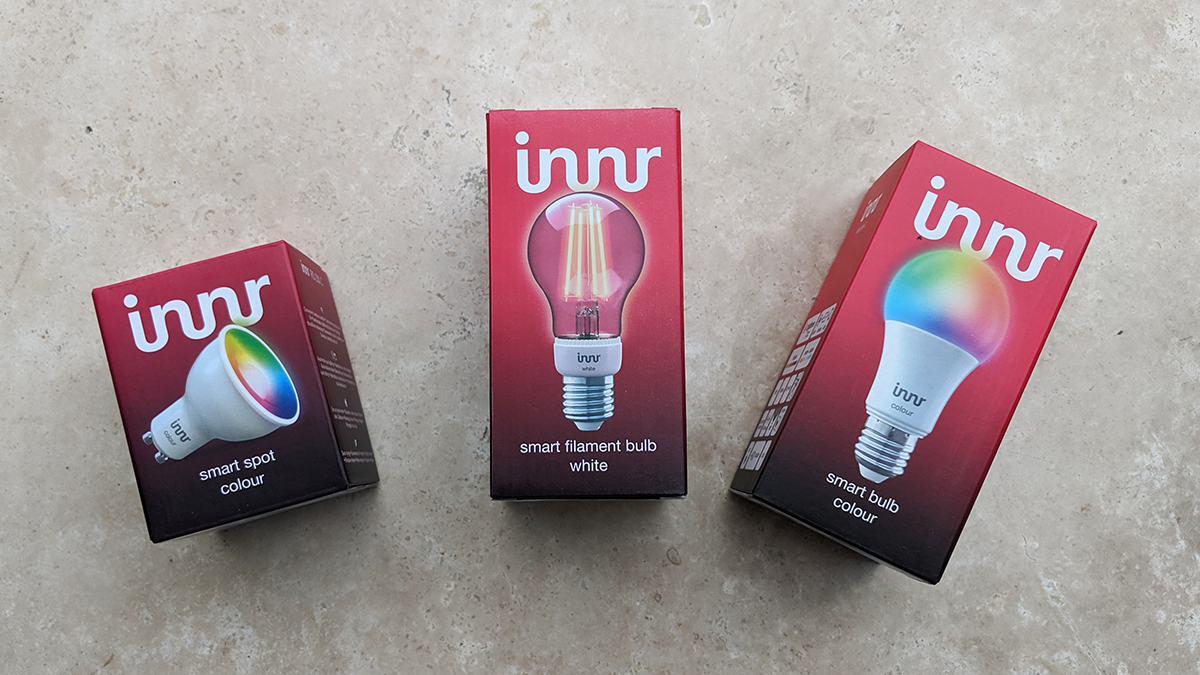Innr smart lights review: these affordable Philips Hue alternatives cover the basics
Innr offers a wide range of bulbs but doesn't bring anything new to smart lights


Innr bulbs are a basic and affordable smart lighting option, but you can probably find better alternatives out there.
-
+
Work with several bridges
-
+
Wide selection of bulbs
-
+
Simple to use and operate
-
-
Setup can be fiddly
-
-
Apps are basic
-
-
Can't work without a bridge
Why you can trust T3

Into an already crowded smart lighting marketplace comes Innr, offering a range of bulbs and lighting solutions at reasonable prices from bulbs to lightstrips. You don't get any particularly innovative features with Innr, but they all tick the boxes for smart bulb basics, and it is one of the bigger smart lighting ranges out there.
Besides the lights themselves, Innr offers a free LightAdvisor tool, which can help you work out which of the various Innr products are best for your various rooms. The company doesn't make any standalone lamps, but it does do bulbs and trips, and even LED lights for placing under your tables.
- These are the best smart home devices you can kit out your home with
- Catch up on the best smart speakers you can possibly buy right now
We've been testing out a variety of the Innr smart bulbs over the last few days and you can read our thoughts below – while they might not topple Philips Hue or Lifx as the very best options when it comes to smart bulbs, they're worth considering for anyone who wants to kit out their home with smart lighting.
To get started, you need an Innror Philips Hue Bridge connected to your router (these bulbs don't connect straight to your router like, say, Lifx bulbs). It is possible to use third-party hubs if needed – more on this below – but you need a hub of some description in place first before the bulbs can be configured.
Innr smart lights review: design and setup

There are only so many ways to design a lightbulb, and Innr bulbs don't look substantially different to any others on the market at the moment: in other words, these are your standard bulbs, design-wise. The Innr Bridge isn't much to write home about either – it's just a standard white plastic box.
What is impressive is just how many different types of bulb and lighting fixture Innr makes: spot lights, standard bulbs, filament bulbs, candle bulbs, LED lights and more, both coloured and white. There are no bayonet fittings though, you've just got the E14 screw, E27 screw, and GU10 spots to choose from, plus custom spotlights that fit on a rack.
First you attach the bridge to your router, and then you add the bulbs one by one, which ended up being a bit of a fiddly process. One bulb needed several goes to be found through the Android app, while we couldn't get past the room setup screen on iOS for some reason.
Get all the latest news, reviews, deals and buying guides on gorgeous tech, home and active products from the T3 experts
However, Innr bulbs also work with bridges from Philips Hue and Samsung SmartThings, so that might be a better way to make use of them. If the bulbs are connected to a bridge (Innr or otherwise), they can also be controlled by Amazon Alexa or Google Assistant as an alternative to the Innr app.
Innr smart lights review: features and app

Speaking of the Innr app, it's not the most polished we've come across in our years of testing smart bulbs. It does what's required, but not in a particularly intuitive or well-designed way. As with the bridge, you might be better using what Philips Hue or Samsung offers for actually controlling these lights.
As well as adjusting the colour and the brightness of the bulbs, and being able to switch them on and off, you can also use the app to set up some basic schedules (on or off at a certain time, for instance). Grouping together various bulbs in a room is straightforward too, if you need to do that.

The lights responded to the app quickly, so you'll soon be brightening or darkening rooms like an expert with the Innr bulbs and app to hand. You don't get quite the same number of advanced features as you do with other systems though – there's no option to automatically switch the lights off when you leave the house, for example.
Innr does offer a dedicated remote control, if you don't want to have to reach for your phone every time you need to adjust the lighting. However, you don't get any kind of motion sensor here – you'll need to add your Innr bulbs to a separate system to get them switching on as you enter a room.
Innr smart lights review: price and verdict

We had a few issues getting the Innr smart bulbs set up around our home, and the app could use a bit of spit and polish, but when it comes to the core functionality of what you need smart lights to do for you, the Innr range works as advertised – and it's quite a range.
In particular, Innr does spot lights on a track, if you need them, which you'll struggle to find from many other smart light providers at the moment. Check the widgets on this page for the latest prices, but Innr bulbs can also often be had for a lower price than those offered by its competitors.
Perhaps the best way to make use of the Innr range is as inexpensive add-ons for an existing system run from a Philips Hue or Samsung SmartThings hub. That seems like a better bet than putting all your eggs in the Innr basket. You could also use Alexa or Google Assistant to control bulbs from different manufacturers together.
In a crowded market, Innr doesn't really do enough to stand out: its bulbs are competitively priced, and there's a lot of them, but in terms of setup, software and features, we think there are better options out there. Still, Innr is worth considering for your smart bulb needs.
Dave has over 20 years' experience in the tech journalism industry, covering hardware and software across mobile, computing, smart home, home entertainment, wearables, gaming and the web – you can find his writing online, in print, and even in the occasional scientific paper, across major tech titles like T3, TechRadar, Gizmodo and Wired. Outside of work, he enjoys long walks in the countryside, skiing down mountains, watching football matches (as long as his team is winning) and keeping up with the latest movies.
